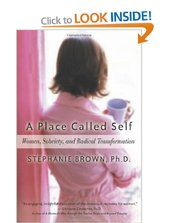William White describes how somewhere in the process of the professionalisation of addiction treatment in the US, treatment got disconnected from the larger more enduring process of long-term recovery.
He points out that we are recycling large numbers of people through repeated episodes of treatment. Their problems are so severe and recovery capital so low, there is little hope that brief episodes of treatment will be successful. We end up blaming them for failing to overcome their problems.


 During the many years I spent working in the addiction and mental health field, first as a neuroscientist and later helping empower people to facilitate their recovery (healing), I rarely heard the word ‘trauma’ being used.
During the many years I spent working in the addiction and mental health field, first as a neuroscientist and later helping empower people to facilitate their recovery (healing), I rarely heard the word ‘trauma’ being used. Here’s the last of the 11 factors facilitating recovery that I wrote about in my book
Here’s the last of the 11 factors facilitating recovery that I wrote about in my book  It’s hard to believe that it is over seven years ago since I launched
It’s hard to believe that it is over seven years ago since I launched  Continuing the qualitative research project conducted by Gemma Salter, a talented undergraduate student working with me back in 2004. The research involved interviewing nine parents and one grandparent (who had assumed the role of parent) of people with a drug and/or alcohol problem. The participants were recruited from West Glamorgan Council on Alcohol and Drug Abuse (WGCADA) in Swansea and Drug and Alcohol Family Support (DAFS) in Blaenau Gwent, South Wales.
Continuing the qualitative research project conducted by Gemma Salter, a talented undergraduate student working with me back in 2004. The research involved interviewing nine parents and one grandparent (who had assumed the role of parent) of people with a drug and/or alcohol problem. The participants were recruited from West Glamorgan Council on Alcohol and Drug Abuse (WGCADA) in Swansea and Drug and Alcohol Family Support (DAFS) in Blaenau Gwent, South Wales. Continuing to look back at my career in the addiction recovery field and what I have learnt. After reading the excellent book Beating the Dragon: The Recovery from Dependent Drug Use by James McIntosh and Neil McKeganey in 2003, I made the decision to start a research programme involving qualitative analysis of interviews. The first piece of research, which focused on the effects of substance use problems on the family, was conducted by Gemma Salter, a third year undergraduate. Gemma was awarded the prize for the project of the year in my Psychology department.
Continuing to look back at my career in the addiction recovery field and what I have learnt. After reading the excellent book Beating the Dragon: The Recovery from Dependent Drug Use by James McIntosh and Neil McKeganey in 2003, I made the decision to start a research programme involving qualitative analysis of interviews. The first piece of research, which focused on the effects of substance use problems on the family, was conducted by Gemma Salter, a third year undergraduate. Gemma was awarded the prize for the project of the year in my Psychology department. This is eighth post in this particular Series, which comes from my book
This is eighth post in this particular Series, which comes from my book  I met Mike Blanche in around 2003 and he was the first person to help me understand the impact of a person’s substance use problem on family members. Mike was an inspiring figure who had played a key role in the setting up of
I met Mike Blanche in around 2003 and he was the first person to help me understand the impact of a person’s substance use problem on family members. Mike was an inspiring figure who had played a key role in the setting up of  People with serious substance use problems lose a lot of the roles or personal characteristics that help define their normal identity (e.g. loving son, athlete, generosity, intelligence) as their dependence on their substance(s) increases, relationships wither and isolation increases. Eventually, their identity as viewed by others may become ‘a useless, dirty addict’. They will also have personal views of what they have become and these views can lead to lowered self-esteem or even intense hatred of oneself.
People with serious substance use problems lose a lot of the roles or personal characteristics that help define their normal identity (e.g. loving son, athlete, generosity, intelligence) as their dependence on their substance(s) increases, relationships wither and isolation increases. Eventually, their identity as viewed by others may become ‘a useless, dirty addict’. They will also have personal views of what they have become and these views can lead to lowered self-esteem or even intense hatred of oneself. Here is the next section from my chapter Factors Facilitating Recovery in my eBook
Here is the next section from my chapter Factors Facilitating Recovery in my eBook  In the
In the 
 Huseyin Djemil from the UK has this week launched a new podcast focused on recovery from addiction, which he describes as such:
Huseyin Djemil from the UK has this week launched a new podcast focused on recovery from addiction, which he describes as such:


